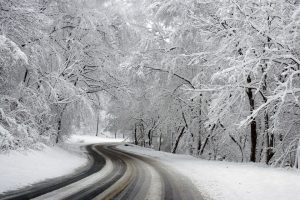
Browse our handpicked selection of vehicles that currently carry a very favorable book value in relation to where they are priced.
If you are looking for a vehicle that could help relieve some negative equity pain in your current vehicle, these selections could help get you on your way.
Maybe you just want to make a great buy and purchase a vehicle priced well under current book value. Taylor's AutoMax is here to help! Click here!
Sincerely,
Your Taylor's Auto Max Team
Driving defensively is always smart, particularly in the winter. Snow and ice are unpredictable, and even if you’ve driven for decades, the conditions can be challenging. Here are some defensive driving tips for this season.
Winterize Your Vehicle
Regular maintenance is important, and preparing your car for the cold weather and harsh conditions is even more important. Make sure you’re coolant is fresh, has anti-freeze properties, and is at the proper level. Water may work in the summer, but it will freeze in the winter and seize up your engine.
Replace worn tires for better traction in snowy and icy conditions. If possible, use a winter tread designed for snow. Check your battery, too. Cold conditions can kill a battery, and the last thing you want is to be stuck somewhere waiting on a tow truck to jump start your battery.
Keep jumper cables and other gear you may need in your vehicle. Sand bags in your trunk add weight, but they are also good for spreading over ice to give you better traction. A flashlight, snow shovel, ice scraper, and snow brush are also must haves. Get your car winterized at Taylor’s Auto Max of Great Falls, Montana.
Practice Braking
Find yourself an empty parking lot when the snow or ice is heavy and practice braking. Even drivers of four-wheel drive vehicles should practice. Remember, it’s four-wheel drive, not four-wheel stop.
Anti-lock brakes act differently than regular brakes. Anti-lock brakes will pump automatically to prevent losing control. Regular brakes will simply skid, so you have to pump them on your own if your car begins to skid.
Steer Into a Skid
If your vehicle begins to skid, you should steer into it. Remember to pump the brakes in this situation, too. When the brakes lock, the tires aren’t moving. Your tires only have traction when they are turning.
Increase Your Driving Distance
It takes longer to bring your vehicle to a stop with ice and snow on the ground. Leave yourself plenty of space when the weather conditions are at their worst. You should also drive slower when conditions get harsh. Slowing down means you’ll stop quicker, even if you begin to skid.
Driving in Snow
Your vehicle is harder to control in heavy snow. Avoid driving in white-out or blizzard conditions, as your visibility can be severely impaired. It’s hard enough to drive in the snow, but if you also can’t see, it can be downright dangerous.
Prepare for the Worst
This is especially important for longer trips to places you’re unfamiliar with. In addition to the essential winter items to keep in your car listed above, you should have blankets, warning flares, and medications. If you break down in a remote area, don’t run your car constantly. Bundle up under your blanket, and only run the vehicle enough to keep it warm until help arrives.
No matter how long you’ve been driving, it’s important to drive defensively when the weather turns wintry. Follow these six tips to stay safer on the roads when Mother Nature has other ideas.
Image via pixabay.com








